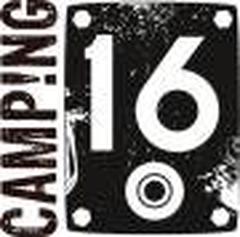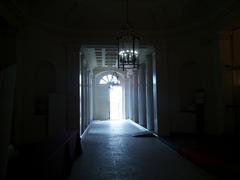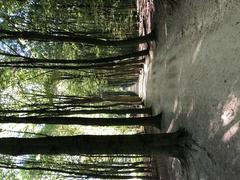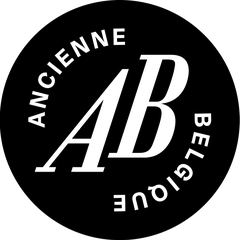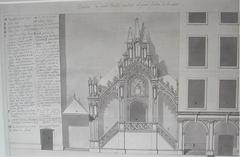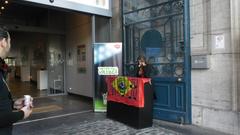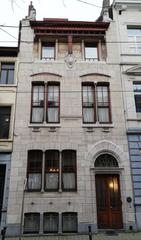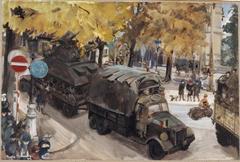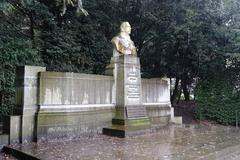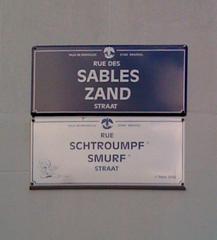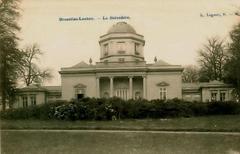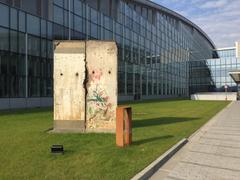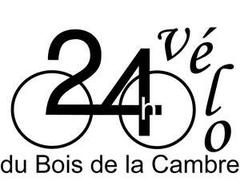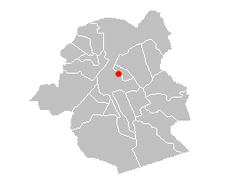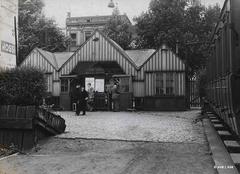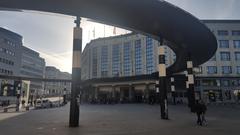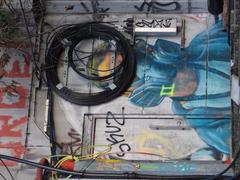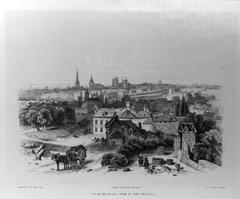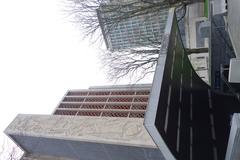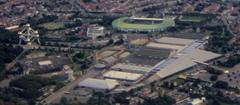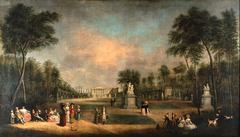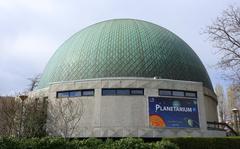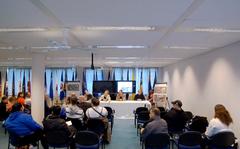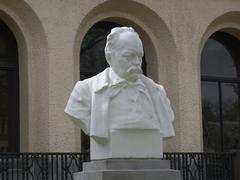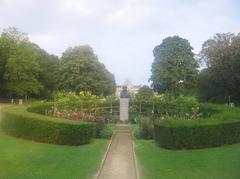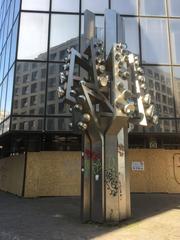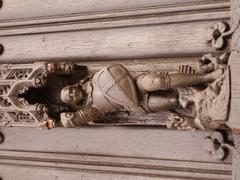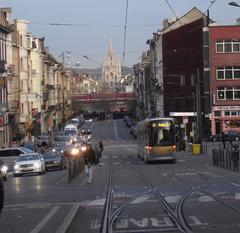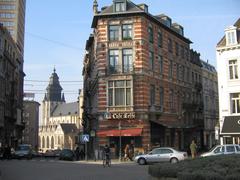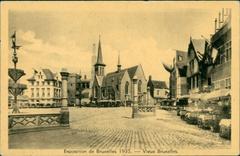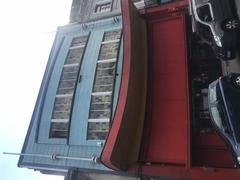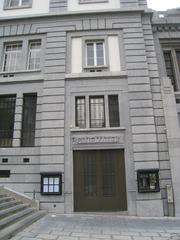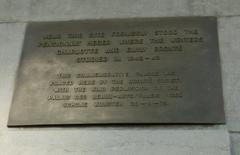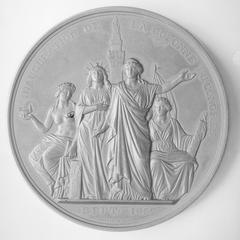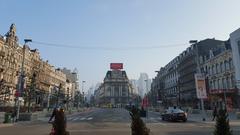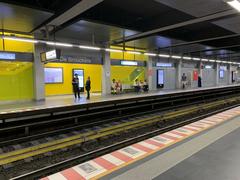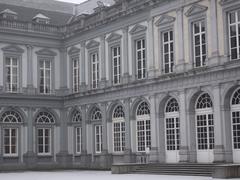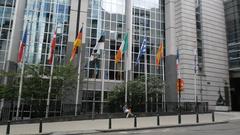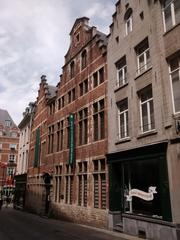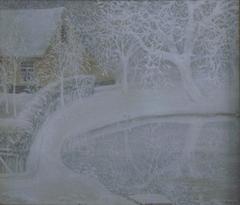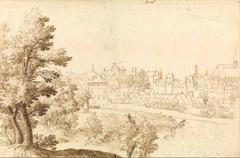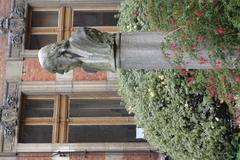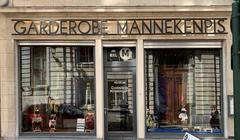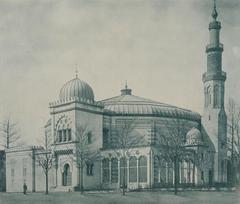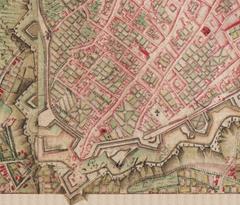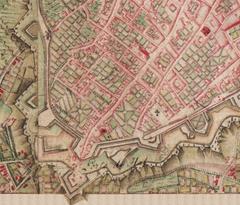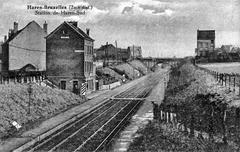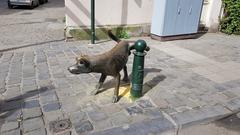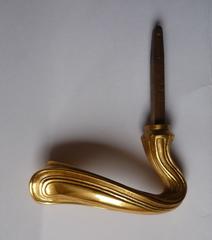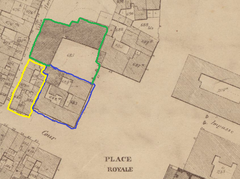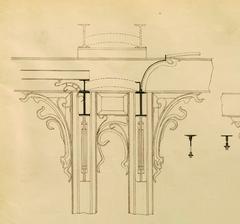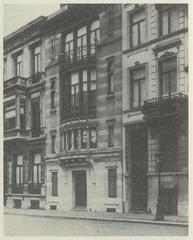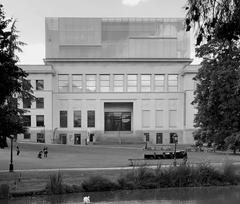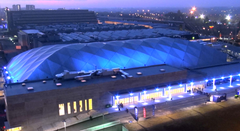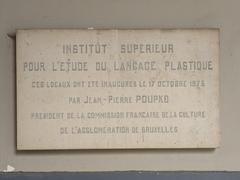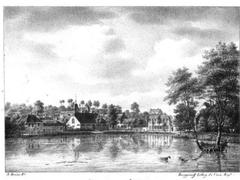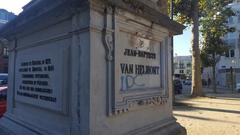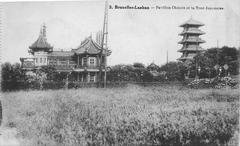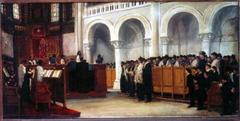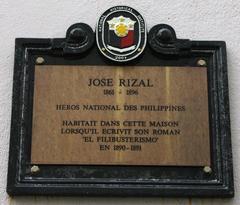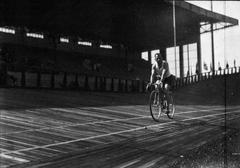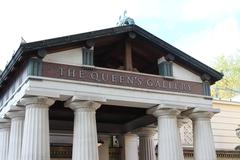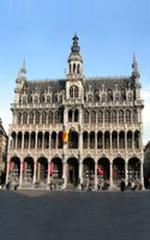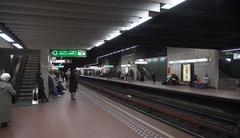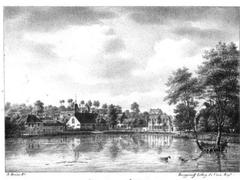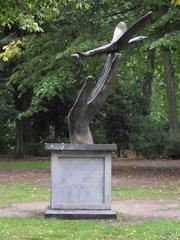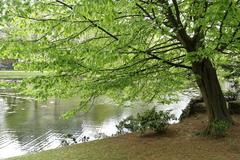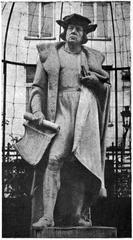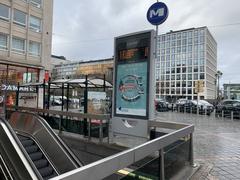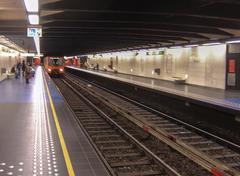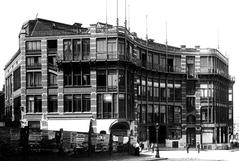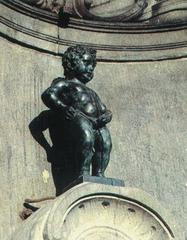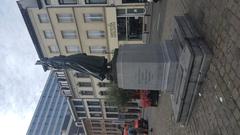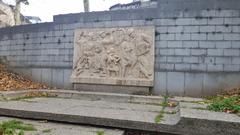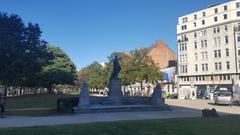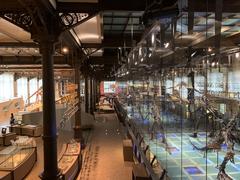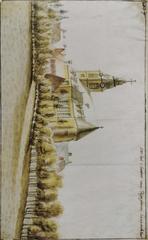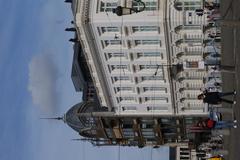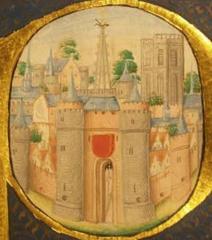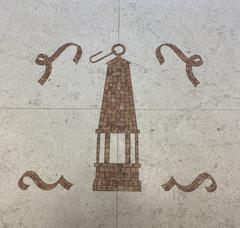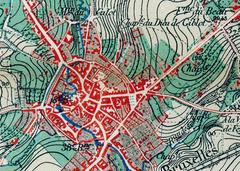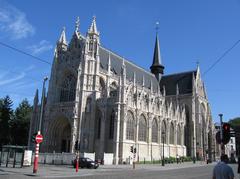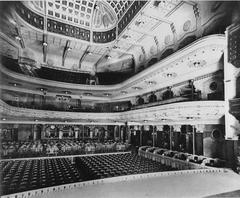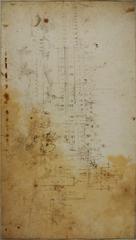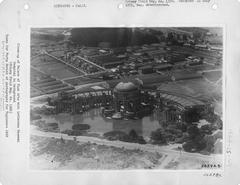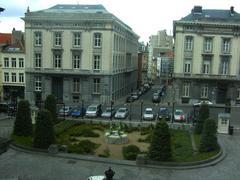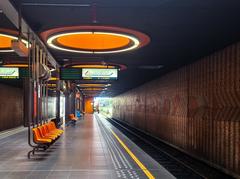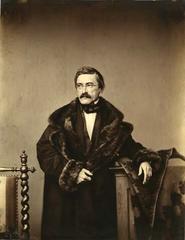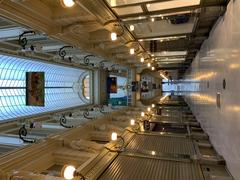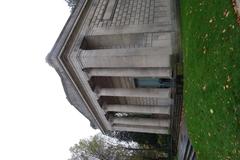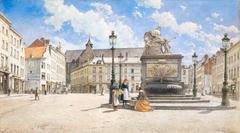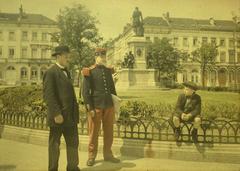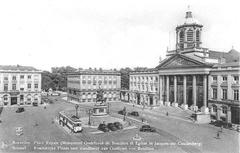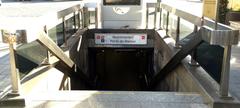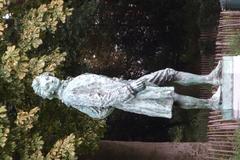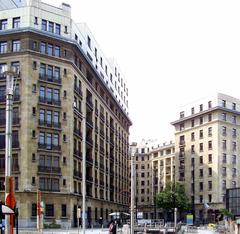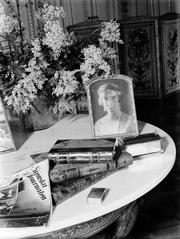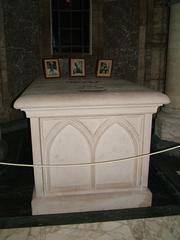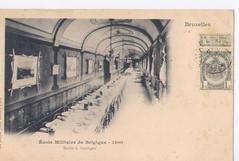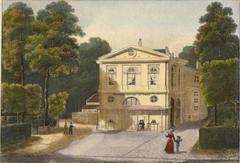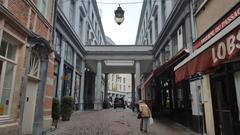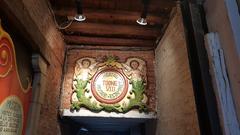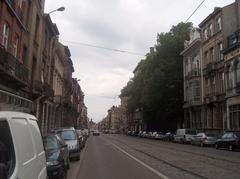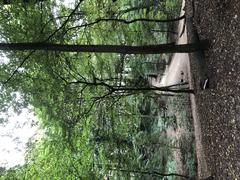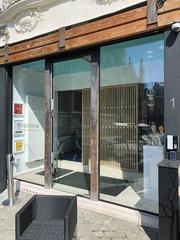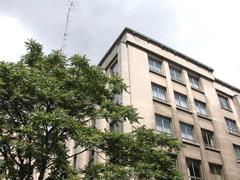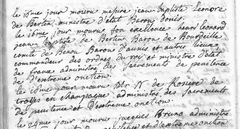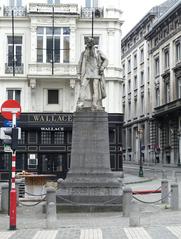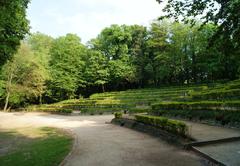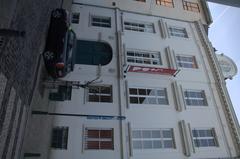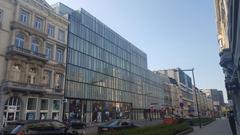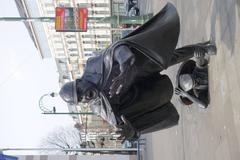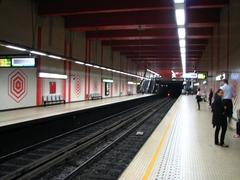Sewer Museum Brussels: Visiting Hours and Tickets
Date: 24/07/2024
Introduction
Discover the hidden yet vital aspects of Brussels by visiting the Sewer Museum, an institution that offers a unique and enlightening perspective into the city’s underground infrastructure. Located at the Porte d’Anderlecht, the museum provides an in-depth look at the history, significance, and ongoing importance of Brussels’ sewer network and the often hazardous profession of sewer workers. Established on May 30, 1988, the Sewer Museum emerged from the frequent requests of the Sewer Department of the City of Brussels to organize tours of its underground network. Visitors can explore the neoclassical-style granting pavilions, experience the essential work of sewage workers, and stroll along the banks of the Senne (source). The museum not only delves into the architectural and historical significance of the sewer system but also highlights the role of the River Senne, which was vaulted in the 19th century due to frequent flooding and pollution (source). With nearly 1,900 km of sewer network under Brussels, the museum educates visitors on the intricate construction and maintenance of this extensive system and the techniques used to control flooding (source). This guide provides all the essential information you need for your visit, including visiting hours, ticket prices, exhibits, and nearby attractions.
Table of Contents
- Introduction
- History and Significance
- Sewer Network and Infrastructure
- The Profession of Sewer Workers
- Water Management and Environmental Impact
- Renovations and Modernization
- Interactive and Educational Exhibits
- Special Events and Activities
- Visitor Information
- Nearby Attractions
- FAQ
- Conclusion
History and Significance
Origins and Development
Established on May 30, 1988, the Sewer Museum emerged from the Sewer Department of the City of Brussels’ frequent requests to organize tours of its underground network. The granting pavilions of the Anderlecht gate were chosen due to their coverage of the Senne sluice, a collector, and secondary tributaries (source).
Architectural Significance
Housed in two former neoclassical-style granting pavilions, visitors enter one and exit through the other, experiencing the essential work of a sewage worker and flood-combat methods. The design allows visitors to stroll along the banks of the Senne and enter a real sewer, the collector sewer of the Chaussée de Mons, which remains in service (source).
The Role of the River Senne
The River Senne plays a central role in the museum’s narrative. Historically an open-air river flowing through Brussels, it was vaulted in the 19th century due to frequent flooding and pollution. Archival photos reveal its transformation into a hidden underground waterway (source).
Sewer Network and Infrastructure
The sewer network under Brussels spans nearly 1,900 km, with thousands of cubic meters of wastewater flowing through daily. The museum provides an in-depth look at the construction and maintenance of this extensive network and the techniques used to control flooding (source).
The Profession of Sewer Workers
The museum shines a light on the challenging and often hazardous profession of sewer workers. Through photos, models, and various items, visitors gain an appreciation for the work undertaken by these men. An audio guide offers further insights into the profession (source).
Water Management and Environmental Impact
Educating visitors on the city’s water cycle, the museum illustrates the impact of daily water usage on sewer functioning. This aspect encourages reflection on personal water consumption and its environmental implications (source).
Renovations and Modernization
Significant renovations in 2007 enhanced the museum’s exhibits and visitor experience. Managed by the Department of Culture since the end of 2015, the museum also partners with VIVAQUA to provide up-to-date information on wastewater collection and treatment (source).
Interactive and Educational Exhibits
The museum offers interactive and educational exhibits for all ages. Children can enjoy games and puzzles in the explorer’s notebook, and an animated audio guide allows visitors to explore at their own pace (source).
Special Events and Activities
Hosting events like the Brussels Museums Nocturnes and Heritage Days, the museum offers unique exploration opportunities. Participation in initiatives like Water Day includes creative activities to raise awareness about water management and conservation (source).
Visitor Information
Visiting Hours and Tickets
The museum is open from Tuesday to Sunday, 10 AM to 5 PM, with free entry on the first Sunday of each month. Guided tours should be booked in advance to ensure availability. For current ticket prices, please visit the official Sewer Museum website.
Accessibility
The museum strives to be accessible to all visitors, including those with special needs. Tailor-made guided tours are available for groups with specific requirements.
Nearby Attractions
While visiting the Sewer Museum, consider exploring other nearby historical sites in Brussels such as the Grand Place, Manneken Pis, and the Atomium. These attractions offer further insights into the rich history and culture of Brussels.
FAQ
What are the visiting hours for the Sewer Museum?
The museum is open from Tuesday to Sunday, 10 AM to 5 PM.
How much are tickets for the Sewer Museum?
For current ticket prices, please visit the official Sewer Museum website.
Conclusion
The Sewer Museum in Brussels offers a unique and enlightening journey into the city’s underground infrastructure. Through its exhibits and interactive displays, the museum provides valuable insights into the history, significance, and ongoing importance of the sewer network and the profession of sewer workers. It also highlights the critical role of water management in urban environments, encouraging visitors to reflect on their own water usage and its environmental impact. For those interested in exploring a hidden yet vital aspect of Brussels, the Sewer Museum is an essential destination. Stay updated by following the museum on social media or visiting their website for the latest news and events.
Visitor Experience at the Sewer Museum, Brussels
Exhibits and Displays
The Sewer Museum in Brussels offers a unique and immersive experience that delves into the history and functioning of the city’s sewer system. One of the highlights is the ‘Rattus’ exhibit, running from September 15, 2023, to June 16, 2024. This exhibit features the brown rat, scientifically known as Rattus norvegicus, which has adapted to urban environments, particularly the sewers. Visitors can learn about the rat’s biology, behavior, and its symbiotic relationship with human waste (source).
The museum also showcases various objects gnawed by rats, such as TV remote controls, lead pipes, and soap, from the Max Hagner Collection at the Cantonal Museum of Natural Sciences of Lausanne. These displays highlight the rat’s ability to chew through almost anything, emphasizing their resilience and adaptability (source).
Interactive Elements
One of the most engaging aspects of the Sewer Museum is its interactive elements. Visitors can watch live footage from the sewers, captured by camera traps as part of the ARMAGUEDON Project by the National Museum of Natural History (MNHN). This project provides a real-time glimpse into the lives of sewer rats, offering a unique perspective on these often-misunderstood creatures (source).
Additionally, the museum features audio excerpts from interviews with Brussels’ sewer workers, who share their experiences and insights into the valuable services provided by rats, such as alerting humans to imminent disasters. These firsthand accounts add a human element to the museum’s narrative, making the experience more relatable and engaging (source).
Educational Programs
The Sewer Museum offers various educational programs aimed at both children and adults. These programs are designed to educate visitors about the importance of the sewer system, its history, and its role in modern urban life. For instance, the museum provides detailed information on zoonotic diseases like leptospirosis, which can be transmitted by rats. According to Sciensano, a few dozen cases of leptospirosis are diagnosed in Belgium each year, often contracted from activities like swimming or water sports in fresh water (source).
Visitor Tips
To make the most of your visit to the Sewer Museum, consider the following tips:
- Plan Ahead: Check the museum’s website for the latest information on exhibits, ticket prices, and opening hours. The ‘Rattus’ exhibit is a must-see and runs until June 16, 2024 (source).
- Wear Comfortable Shoes: The museum involves a fair amount of walking, including some areas that may be damp or uneven.
- Interactive Features: Take advantage of the interactive elements, such as the live sewer footage and audio interviews, to gain a deeper understanding of the exhibits.
- Educational Materials: Don’t miss the educational programs and materials available at the museum. They provide valuable insights into the sewer system and its impact on urban life.
- Photography: Check the museum’s policy on photography. Some areas may allow photos, while others may not.
Visitor Information
- Opening Hours: The Sewer Museum is open from Tuesday to Sunday, 10 AM to 5 PM. It is closed on Mondays and certain public holidays.
- Tickets: General admission is €8 for adults, €6 for seniors and students, and €4 for children aged 6-18. Children under 6 enter for free.
- How to Get There: The museum is located at Porte d’Anderlecht, 1000 Brussels. It is easily accessible by public transport, with nearby metro and bus stops.
Accessibility
The Sewer Museum is committed to being accessible to all visitors. The museum provides facilities for visitors with disabilities, including ramps and accessible restrooms. Additionally, the museum staff are trained to assist visitors with special needs, ensuring that everyone can enjoy the exhibits and interactive elements.
Souvenirs and Memorabilia
Before leaving, be sure to visit the museum’s gift shop, which offers a variety of souvenirs and memorabilia related to the exhibits. From educational books and toys to unique items like rat-themed merchandise, there’s something for everyone. These items make for great keepsakes and help support the museum’s ongoing educational and conservation efforts.
Nearby Attractions
While visiting the Sewer Museum, consider exploring other nearby attractions in Brussels. The city is rich in history and culture, offering numerous museums, parks, and historical sites. Some popular nearby attractions include:
- The Grand Place: A UNESCO World Heritage site, this central square is known for its stunning architecture and vibrant atmosphere.
- Manneken Pis: This iconic statue of a little boy urinating is a must-see for visitors to Brussels.
- The Royal Palace: The official palace of the Belgian monarchy, open to the public during the summer months.
- The Magritte Museum: Dedicated to the works of the surrealist artist René Magritte, this museum is a short distance from the Sewer Museum.
Dining Options
After exploring the Sewer Museum, you might want to grab a bite to eat. Brussels offers a wide range of dining options, from traditional Belgian cuisine to international fare. Some nearby recommendations include:
- Chez Léon: Famous for its mussels and fries, this restaurant offers a quintessential Belgian dining experience.
- La Roue d’Or: Known for its Art Deco interior and classic Belgian dishes, this restaurant is a favorite among locals and tourists alike.
- Peck 47: A cozy café offering a variety of healthy and delicious options, perfect for a quick lunch or snack.
Photographic Spots
The Sewer Museum has some unique spots perfect for photography. Capture the intricate designs of the sewer tunnels, the fascinating ‘Rattus’ exhibit, and the historical artifacts on display. Always check with the museum staff for any photography restrictions.
Special Events and Guided Tours
The Sewer Museum hosts special events and guided tours throughout the year. Check the museum’s website for the latest schedule and book your spot in advance to enhance your visit.
FAQ
- What are the opening hours of the Sewer Museum in Brussels? The museum is open from Tuesday to Sunday, 10 AM to 5 PM.
- How much are tickets for the Sewer Museum? General admission is €8 for adults, €6 for seniors and students, and €4 for children aged 6-18. Children under 6 enter for free.
- Is the Sewer Museum accessible? Yes, the museum provides facilities for visitors with disabilities, including ramps and accessible restrooms.
Final Thoughts
A visit to the Sewer Museum in Brussels is a unique and educational experience that offers insights into the city’s history, infrastructure, and the often-overlooked world of sewer rats. With its engaging exhibits, interactive elements, and educational programs, the museum provides a memorable experience for visitors of all ages. Whether you’re a history buff, a science enthusiast, or simply curious about the hidden workings of the city, the Sewer Museum is a must-visit destination in Brussels. Don’t forget to download the Audiala mobile app for more updates and follow us on social media!
Summary and Key Points
The Sewer Museum in Brussels offers a unique and enlightening journey into the city’s underground infrastructure. Through its diverse exhibits and interactive displays, the museum provides valuable insights into the history, significance, and ongoing importance of the sewer network and the profession of sewer workers. Notably, the museum also emphasizes the critical role of water management in urban environments, encouraging visitors to reflect on their water usage and its environmental impact (source). With engaging exhibits like the ‘Rattus’ display and educational programs for all ages, the museum makes for a compelling and educational outing. Whether you’re a history enthusiast, a science buff, or simply curious about the hidden workings of the city, the Sewer Museum is an essential destination in Brussels. Don’t forget to explore the nearby attractions and dining options to complete your visit. Stay updated by following the museum on social media or visiting their website for the latest news and events (source).
Official Websites and Credible Sources
- Sewer Museum, 2024 https://sewermuseum.brussels/en/accueil-english/the-museum/
- Visitor Guide, 2024 https://sewermuseum.brussels/wp-content/uploads/2024/02/visitorguide-rattus-V4_bdef_WEB.pdf
